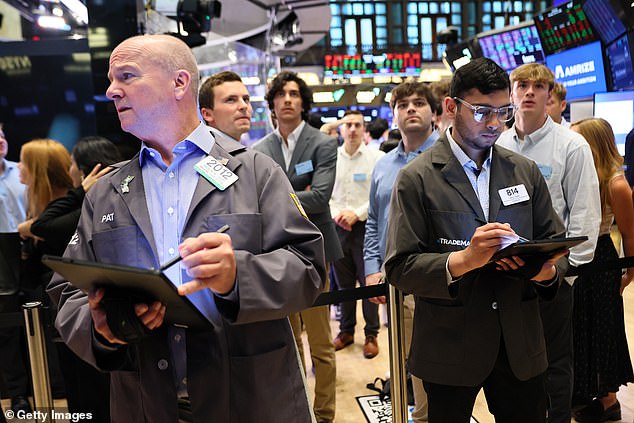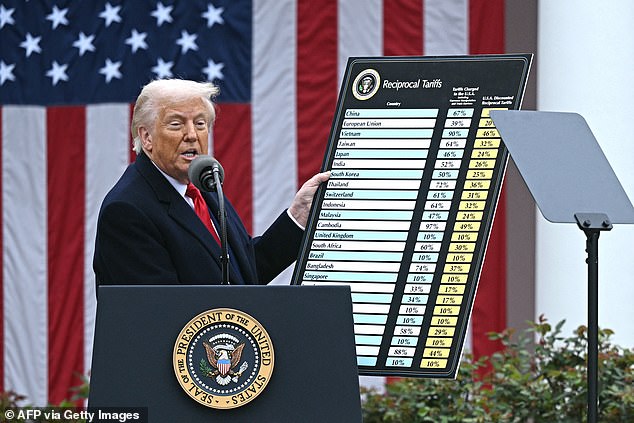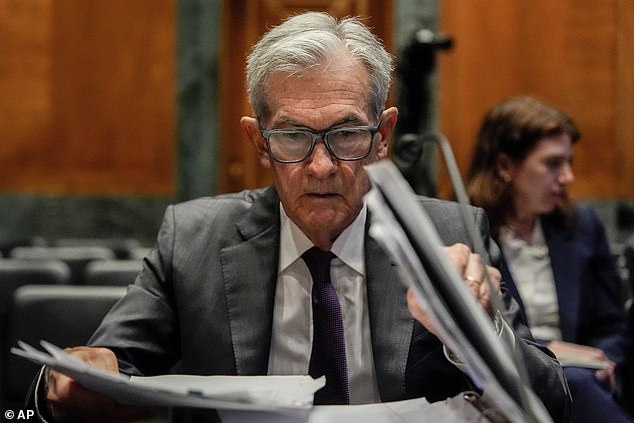The US dollar — once a pillar of American economic strength — is having its worst start to the year since 1973.
President Trump’s whipsawing trade and economic policies have prompted investors to sell what is still the world’s dominant currency.
So far in 2025, the dollar index — which tracks the greenback against major currencies like the euro and pound — has dropped more than 10 percent.
That marks the sharpest first-half fall since the collapse of the gold-backed Bretton Woods system more than 50 years ago sent the dollar down 15 percent.
It’s also the dollar’s weakest showing of any six-month stretch since the 2009 financial crisis.
‘The dollar has become the whipping boy of Trump 2.0’s erratic policies,’ Francesco Pesole, an FX strategist at ING told the Financial Times.
Long seen as a global safe haven, the dollar is now losing its luster as investors react to the administration’s unpredictable tariffs, the US’s ballooning federal debt, and Trump’s attacks on the Federal Reserve.
On Monday morning, the dollar dipped another 0.2 percent as the Senate prepared to vote on amendments to Trump’s sweeping new legislation — dubbed the ‘big beautiful bill’ — which is projected to add $3.2 trillion to the national debt over the next decade.
Your browser does not support iframes.
The bill has raised serious concerns about the country’s borrowing which has in turn led investors to turn away from US Treasury bonds.
The dollar’s decline runs contradictory to the predictions many analysts made at the start of Trump’s second term.
Wall Street widely expected Trump’s impending trade war with the world to damage economies abroad, raise inflation at home and strengthen the dollar against other currencies.
‘You had a shock in terms of liberation day, in terms of the US policy framework,’ Andrew Balls, from bond group Pimco, told the FT.
While Balls argued the dollar will not be replaced as the world’s reserve currency it ‘doesn’t mean that you can’t have a significant weakening.’
The dollar is also being pushed lower by expectations that the Fed will cut rates.
Trump has heaped pressure on Fed chair Jerome Powell to cut rates faster, and has even suggested the nomination of a ‘shadow’ chair that will take over from Powell at the end of his term next May.
Wall Street is concerned that such a move would undermine the Fed’s independence that is seen as critical to market stability.

Investors have been put off the dollar by Trump’s erratic economic policies

Trump’s ‘Liberation day’ tariffs sparked a market rout

Trump called Princeton-educated Fed chair Jerome Powell ‘low IQ for what he does’
‘The Administration is now laying the groundwork — including with The One, Big, Beautiful Bill — to turbocharge economic, job, and investment growth, and it’s high time for monetary policy to complement this agenda and support America’s economic resurgence,’ a White House spokesperson said last week.
Markets respond not just to official Fed decisions, but also to hints about future moves — meaning mixed signals could cause turmoil.
‘You’re going to have two people trying to steer the ship: One that’s actually steering it, and one that’s the backseat driver,’ Ryan Sweet, chief US economist at Oxford Economics told Reuters.
A new Fed chair seen as under Trump’s influence would also concern Wall Street.
‘Whomever is appointed, the key thing to monitor is whether they are perceived as being a political appointee,’ Eric Winograd, chief U.S. economist at AllianceBernstein told Reuters.
‘And by that, I mean someone whose views change with the whims of the president.’
Share or comment on this article:
Major indicator of US economic strength has worst run since 1973